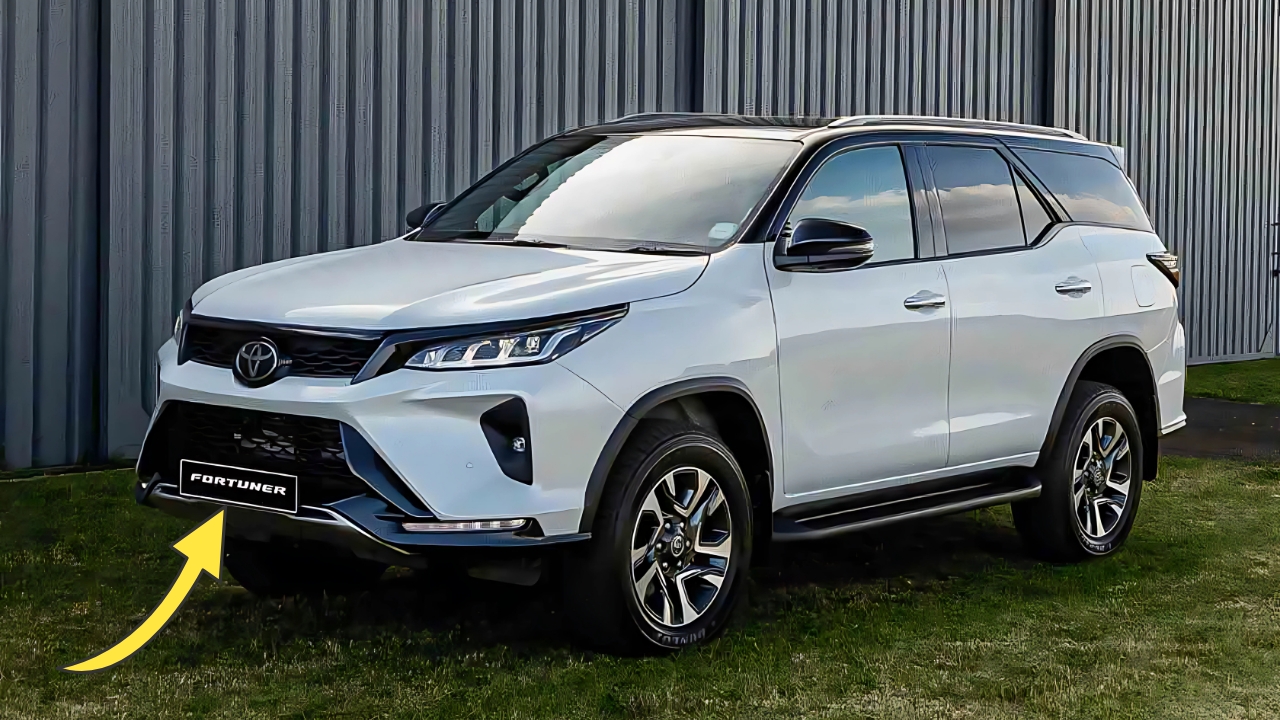Toyota Fortuner Mild Hybrid: The Toyota Fortuner has established itself as a dominant force in the premium SUV segment across numerous global markets, particularly in South and Southeast Asia, the Middle East, and parts of Africa.
Known for its robust build quality, genuine off-road capability, and legendary reliability, the Fortuner has become the default choice for consumers seeking a versatile seven-seater SUV with genuine capability beyond paved roads.
The introduction of mild hybrid technology to this established platform represents Toyota’s response to evolving regulatory requirements and consumer expectations regarding efficiency and environmental impact.
Toyota Fortuner Mild Hybrid: Powertrain Innovation and Efficiency
The heart of the Fortuner Mild Hybrid is its revised powertrain system that builds upon Toyota’s proven 2.8-liter turbodiesel engine. This four-cylinder unit continues to serve as the primary power source, delivering approximately 204 horsepower and 500 Nm of torque in its latest iteration.
The significant enhancement comes through the integration of a 48-volt mild hybrid system that incorporates a belt-driven integrated starter generator (ISG) positioned between the engine and transmission.
This mild hybrid architecture serves multiple functions that collectively enhance efficiency without compromising the capability that defines the Fortuner’s character.
The system provides torque assistance during initial acceleration, effectively reducing turbo lag and improving responsiveness from standstill – a welcome enhancement for both urban driving and off-road scenarios where precise throttle control is essential.
During deceleration, the system recovers kinetic energy that would otherwise be lost as heat, storing it in a compact lithium-ion battery pack positioned under the rear floor.
The start-stop functionality has been refined through the mild hybrid system, enabling smoother, more immediate restarts and the ability to shut down the engine while coasting at higher speeds when power demands are minimal.
These combined enhancements deliver approximately 12-15% improvement in fuel efficiency compared to the conventional diesel powertrain, with corresponding reductions in carbon dioxide emissions.
Transmission options include a refined 6-speed automatic and a 6-speed manual in select markets, both recalibrated to work harmoniously with the mild hybrid system.
The automatic transmission particularly benefits from the additional torque available at low engine speeds, delivering smoother shifts and reducing the need for downshifts during moderate acceleration.
Chassis Refinement and Driving Dynamics
The Fortuner’s body-on-frame construction remains unchanged, preserving the robust underpinnings that contribute to its off-road capability and durability in challenging conditions.
However, Toyota’s engineers have implemented subtle refinements to the suspension tuning, taking advantage of the mild hybrid system’s smoother power delivery to enhance overall ride quality.
The front double-wishbone and rear four-link suspension architecture continues, though spring rates and damper valving have been recalibrated to provide improved body control while maintaining wheel articulation for off-road scenarios.
The electronic power steering system receives updates that deliver more consistent weighting and improved feedback, addressing a common criticism of the previous generation.
The four-wheel drive system maintains its proven capabilities with high and low range transfer case, though the integration of the mild hybrid system has allowed for more sophisticated traction control programming.
The Multi-Terrain Select system now offers more precise calibration for various surface conditions, working in conjunction with the electric torque assistance to provide enhanced control in challenging off-road scenarios.
Exterior Design Evolution
Visually, the Fortuner Mild Hybrid introduces subtle design updates that distinguish it from conventional variants while maintaining the muscular, purposeful aesthetic that has contributed to the model’s appeal.
The front fascia features a revised grille design with horizontal chrome elements and subtle blue accents that signify its electrified status.
LED headlamps with revised daytime running light signatures create a more contemporary appearance, while the front bumper incorporates redesigned fog lamp housings and skid plate elements.
The side profile remains largely unchanged, preserving the distinctive character line that rises toward the rear of the vehicle.
New alloy wheel designs in 18 and 20-inch diameters feature more aerodynamic patterns that contribute marginally to efficiency while adding visual distinction.
At the rear, updated LED tail lamps incorporate dynamic turn signals on premium variants, while a redesigned bumper houses integrated exhaust finishers.
Color options expand to include several new metallic finishes, including a signature Hybrid Blue that further distinguishes this variant in the lineup.
Overall, the exterior changes demonstrate restraint, acknowledging the Fortuner’s established design language while introducing elements that reflect its technological evolution.
Interior Refinement and Technology
The cabin receives more substantial updates, balancing the rugged utility expected from the Fortuner with enhanced refinement and technology integration.
The dashboard architecture maintains its practical layout but incorporates new materials including soft-touch surfaces with contrast stitching and satin metallic accents.
Higher trim levels feature genuine wood inserts with a sustainable sourcing certification, reflecting Toyota’s broader environmental commitments.
The instrument cluster combines analog gauges with a configurable 7-inch digital display that provides hybrid-specific information including energy flow, regeneration status, and efficiency metrics.
The central infotainment system upgrades to Toyota’s latest 10.1-inch touchscreen interface with wireless Apple CarPlay and Android Auto integration, voice recognition capabilities, and connected services through a dedicated smartphone application.
Seating comfort receives attention through revised cushioning and additional adjustment ranges for the front seats, which now offer ventilation functions on premium variants.
The second-row bench features improved thigh support and recline angles, while access to the third row has been enhanced through a revised folding mechanism. Interior space utilization remains largely unchanged, preserving the Fortuner’s practical seven-seat capability.
Safety Enhancements
Safety technology expands significantly with the inclusion of Toyota Safety Sense 2.0 across most variants. This comprehensive suite includes pre-collision warning with pedestrian and cyclist detection, adaptive cruise control that functions across the full speed range, lane departure alert with steering assistance, and automatic high beam control.
These active safety features complement the passive safety elements including multiple airbags, vehicle stability control, and the robust body structure that has contributed to the Fortuner’s strong safety reputation.
Additional safety enhancements include blind spot monitoring, rear cross-traffic alert, and a 360-degree camera system that proves particularly useful during off-road driving and maneuvering in tight urban environments.
These features collectively bring the Fortuner’s safety technology offerings in line with contemporary expectations while acknowledging the diverse operating conditions this vehicle typically encounters.
Toyota Fortuner Mild Hybrid: Market Positioning and Conclusion
The Toyota Fortuner Mild Hybrid represents a thoughtful evolution of this established platform, addressing efficiency requirements and technological expectations without compromising the core attributes that have defined its success.
By implementing a mild hybrid system that enhances rather than fundamentally alters the driving experience, Toyota demonstrates understanding of its customer base, who value reliability and capability above all else.
This approach positions the Fortuner to maintain its market leadership as regulatory pressures increase while bridging the gap to more comprehensive electrification that will inevitably follow.
For consumers seeking a versatile, capable SUV with improved efficiency and reduced environmental impact, the Fortuner Mild Hybrid offers a compelling proposition that builds upon Toyota’s reputation for delivering products that excel in diverse and challenging conditions around the world.
The mild hybridization of the Fortuner demonstrates Toyota’s pragmatic approach to powertrain evolution, acknowledging that different markets and vehicle categories require tailored electrification strategies rather than a one-size-fits-all approach.
This ensures the Fortuner remains relevant and competitive as the automotive landscape continues its gradual transition toward more sustainable mobility solutions.

